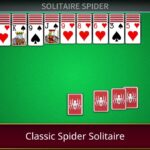tic tac toe 2 player sets the stage for this classic showdown, where strategy and foresight converge on a simple 3×3 grid. This timeless game invites two players to engage in a battle of skill, where each turn presents the opportunity to outsmart the opponent. With straightforward rules and captivating mechanics, tic tac toe has become a beloved choice for both casual gamers and strategic minds alike, making every match an exciting test of intellect.
As players draw their Xs and Os, they navigate through the essential rules that dictate how turns are taken, how victories are claimed, and the excitement that builds with each move. Beyond these fundamentals lie strategies that can transform a casual encounter into a fierce competition, where anticipating an opponent’s next move can make all the difference. Whether played on paper or digital platforms, tic tac toe offers a variety of experiences that keep the essence of the game alive while introducing unique twists to the classic format.
Game Rules and Mechanics

Tic Tac Toe is a classic two-player game that combines strategy and simplicity, making it accessible to players of all ages. The game is played on a 3×3 grid, where each player takes turns marking a space with their symbol, either X or O. The objective is to be the first to place three of their marks in a horizontal, vertical, or diagonal row.
Turns in Tic Tac Toe are straightforward. Players alternate placing their symbols in empty squares on the grid until one player wins or the game ends in a draw.
Turn Taking in the Game, Tic tac toe 2 player
The dynamics of turn-taking are crucial for maintaining the flow of the game. Each player must wait for their opponent to complete their move before placing their symbol in an available square. The game begins with one player chosen to go first, typically decided by mutual agreement or a coin toss.
Important aspects of turn-taking include:
- Players alternate placing their symbols after each turn, ensuring the game progresses fairly.
- If a player mistakenly places their mark in an occupied square, that turn is invalid, and they must choose a different square.
- The game continues until one player wins or all squares are filled without a winner, resulting in a draw.
Winning Conditions
Understanding the winning conditions is essential for both players to strategize effectively. A player wins by aligning three of their symbols in a row, which can occur in several formations.
The winning conditions are as follows:
- Three symbols in a row horizontally across any of the three rows.
- Three symbols in a column vertically down any of the three columns.
- Three symbols in a diagonal line, either from the top left to the bottom right or from the top right to the bottom left.
“To win at Tic Tac Toe, anticipate your opponent’s moves and look for opportunities to create three in a row.”
Players should be mindful of both their own moves and those of their opponent, as blocking potential winning moves can be as crucial as creating their own winning opportunities. The game encourages strategic thinking and foresight, making it not just a game of luck but also one of skill and planning.
Strategies for Winning: Tic Tac Toe 2 Player

Tic Tac Toe is a deceptively simple game that rewards strategic thinking and foresight. While the rules are easy to grasp, mastering the game requires understanding various strategies that can improve a player’s chances of victory. Players can enhance their gameplay through both offensive and defensive tactics, as well as by anticipating their opponent’s moves.
Employing effective strategies is crucial in Tic Tac Toe, and different approaches can be taken based on the game situation. Here are several common strategies used by players to increase their chances of winning:
Common Strategies
Understanding offensive and defensive strategies can significantly impact your performance in Tic Tac Toe. Here are some effective strategies to consider:
- Control the Center: Starting in the center square offers the most opportunities to create winning lines, making it a strong opening move.
- Forking: Create a situation where you have two ways to win in your next turn. This forces your opponent into a defensive position.
- Block Opponent’s Moves: Always be aware of your opponent’s potential winning moves. If they have two in a row, blocking the third is essential.
- Edge Play: While the corners are powerful, controlling edges can also lead to advantageous setups, especially when combined with corner placements.
Advanced Tactics
Anticipating an opponent’s moves requires a keen understanding of the game’s dynamics. Here are advanced tactics that can be employed to outsmart your opponent:
- Pattern Recognition: Familiarize yourself with common patterns and sequences that lead to wins or blocks. This knowledge will enhance your ability to predict moves.
- Psychological Strategy: Use bluffing and misleading moves to confuse your opponent. For instance, feigning weakness may prompt them to make a mistake.
- Simulation: Visualize the game several moves ahead. Anticipate possible responses from your opponent and adjust your strategy accordingly.
- Adaptation: Be prepared to shift your strategy based on your opponent’s reactions. Flexibility can lead to exploiting openings that arise unexpectedly.
Offensive vs. Defensive Strategies
Both offensive and defensive strategies play pivotal roles in Tic Tac Toe. Understanding the strengths and weaknesses of each can guide your gameplay.
| Offensive Strategies | Defensive Strategies |
|---|---|
| Focus on creating multiple winning opportunities (forks). | Prioritize blocking opponent’s threats to prevent immediate loss. |
| Initiate play by taking strong positions (center, corners). | Respond to opponent’s moves with counteractions that ensure survival. |
| Leverage the power of the first move for an advantage. | Maintain vigilance to recognize when to switch from offense to defense. |
| Encourage mistakes by offering bait while maintaining a strong position. | Analyze opponent’s patterns to predict moves and counter effectively. |
Mastering the balance between offensive and defensive strategies is key to consistently winning in Tic Tac Toe.
Variations of the Game

Tic Tac Toe, while simple in its traditional form, has inspired a variety of exciting variations that enhance gameplay and introduce new strategies. These variations maintain the essential mechanics of the game while providing unique twists that keep players engaged. Below, we explore some of the most popular variations of Tic Tac Toe, along with a proposed new rule set for a refreshing twist, and a comparison of traditional gameplay on paper versus digital platforms.
Popular Variations of Tic Tac Toe
Numerous adaptations of Tic Tac Toe exist, each offering different board sizes and rules. The following variations illustrate how the classic game can evolve:
- 3D Tic Tac Toe: This version utilizes a three-dimensional grid, typically a 3x3x3 cube, allowing players to win by aligning three of their marks in any direction—horizontally, vertically, or diagonally across layers.
- Tic Tac Toe with Larger Grids: Playing on a larger grid, such as 4×4 or 5×5, increases the complexity of the game, often requiring players to connect four or five marks in a row to win.
- Ultimate Tic Tac Toe: In this variation, the board consists of nine smaller Tic Tac Toe grids. The placement of a mark in one small grid dictates the next grid where the opponent must play, adding a layer of strategy and foresight.
- Misère Tic Tac Toe: Here, the objective is to avoid making three in a row. The last player to create a line of three loses, transforming the strategy from offense to defense.
New Rule Set for a Unique Twist
Introducing a new way to play Tic Tac Toe can reinvigorate interest in the game. Here is a proposed rule set that combines elements of strategy with chance:
1. Board Layout: A traditional 3×3 grid is used, but at the start, players draw a card from a shuffled deck of “action cards” that can alter gameplay.
2. Action Cards: Each card contains a unique ability, such as “Swap,” which allows players to exchange one of their marks with an opponent’s, or “Block,” which enables a player to prevent the opponent from marking a particular space for one turn.
3. Turn Structure: Players take turns placing their marks and may choose to use an action card once per game.
4. Victory Conditions: The winner is determined by traditional means (three in a row), but if a player uses an action card, they must reveal it to the opponent, adding a psychological element to the gameplay.
Differences Between Playing on Paper vs. Digital Platforms
The medium through which Tic Tac Toe is played significantly impacts the overall experience. Each format has its advantages and unique features:
- Paper: Playing on paper allows for a tangible interaction, where players can easily jot down moves and visualize the game. It promotes face-to-face interaction and can be played anywhere, with minimal setup required.
- Digital Platforms: Digital versions of Tic Tac Toe often come with enhanced graphics, sounds, and the ability to play against AI or online opponents. They may include features like score tracking, game history, and various difficulty levels, making them accessible to a wider audience.
- Game Pace: On paper, the pace can be slower due to the need for manual marking and turn-taking. In contrast, digital platforms often speed up gameplay with automated systems.
- Learning Curve: Digital platforms may offer tutorials and hints, which can assist beginners in understanding strategies better than traditional paper play, where players may rely solely on experience and observation.
Summary

In conclusion, tic tac toe 2 player is more than just a simple game; it’s a dynamic clash of minds that encourages players to think critically and strategize effectively. From mastering the rules to implementing winning tactics and exploring creative variations, each match becomes a unique experience. As you engage in this delightful duel, remember that every game is an opportunity to learn, adapt, and, ultimately, enjoy the timeless thrill of competition.


